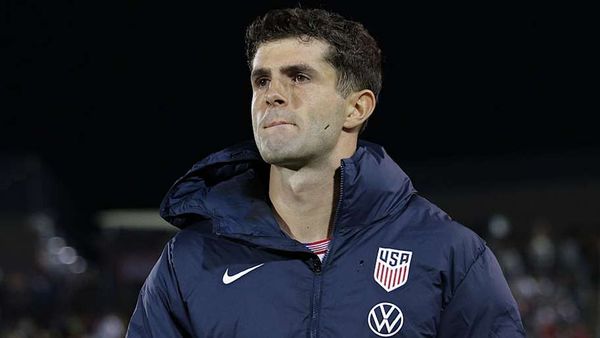
In the debate over how best to respond to the challenge of climate change, the environment and economic growth are often cast as in perpetual conflict. At first glance, Coul Links, some 350 hectares of sand dunes and their deserted hinterland on the Sutherland coast in the far north-east of Scotland, seems an unlikely place for that conflict to be playing out publicly.
In this beach-fringed wilderness currently covered in pink rosebay willowherb, cream-coloured meadowsweet, spindly birch trees and great clumps of coconut-scented gorse, the only inhabitants to be glimpsed are the occasional rabbit or deer. Yet a proposal to build an eco-friendly golf course here has inflamed passions in the tight-knit community that surrounds the links.
In 2020, a planning application by two American developers – definitely not cut from the same cloth as Donald Trump, pro-campaigners are quick to point out, with the saga of the former president’s Menie Estate golf course still casting a shadow – was rejected by Scottish ministers on the grounds of the environmental damage it would cause to a site of special scientific interest (SSSI). The negative verdict from Edinburgh left “unresolved issues” for many of the 5,000 people in the nearby communities of Dornoch, Embo, Golspie and Brora because it dashed hopes of 400 new jobs in an area most local young people are leaving to find employment, explains Gordon Sutherland of Communities for Coul (C4C).
The 62-year-old businessman, from a Sutherland family (“hence the name”), has been part of the community all his life. He has joined forces with others in the area to set up C4C as a not-for-profit company. They ran a crowdfunding campaign to stage a local referendum in June 2021 so people could express their views. On a 44% turnout – “which compares favourably with council elections here, and this was a single issue” – just short of seven in 10 voted in favour of a “world-class, environmentally sensitive” golf course on Coul Links.
With the pro bono help of eco-experts, C4C created a new proposal to develop just 1.5 hectares at Coul Links (90% less than previously). This would be for tees and greens, with the fairways in between left as they are now and simply mown. Binding commitments were made to improve what it says is a dune system “degraded” by invasive species growing out of control. Substantial funds would be invested to employ and train staff all year round to restore the environmentally important site.

The scheme will go before the local planning authority, the Highland council, in early September. The council approved the earlier plans by 16 to 1 but opposition from NatureScot, a statutory body with responsibility for maintaining SSSIs, caused the proposal to be referred to ministers.
NatureScot is again advising against the development. “It is very challenging to locate a proposal like this on an SSSI,” says NatureScot’s head of operations north, David Mackay. “We can see that improvements have been made over the first proposal, but the course still spreads from one end of the fragile dune system to the other and would therefore cause habitat loss. It would be akin to death by a thousand cuts.”
As a Golspie-born man, the affable Mackay does admit to feeling “uneasy” that a scheme to bring jobs to an area with so little year-round employment opportunities might be lost. “There are socioeconomic benefits without a shadow of doubt,” he says, “but how do you weigh that against the impact on a nationally important site?”
In a report lodged in May with the Highland council on the new plans, NatureScot suggested the golf course may be more acceptable if it was moved back on to adjoining farmland. Yet what looks like an olive branch, says C4C’s Sutherland, in reality shows how little grasp the statutory body has of economic realities.

“This proposal will be the biggest inward economic investment into east Sutherland ever [an estimated £50m]. To justify that, and to deliver the jobs we are predicting, this can’t be just another golf course. It has to be a world-class golf course, like the existing Royal Dornoch links course nearby that is so economically important to the area. Playing it is what makes people want to come here – on genuine links land right next to the sea, following the natural contours, not some artificial obstacles created on flat farmland far away from the beach.”
NatureScot’s opposition has received enthusiastic backing from Not Coul, a local campaign group led by environmental consultant Tom Dargie, who has lived for 30 of his 75 years next to Coul Links and has explored every inch of it. He has accused C4C of being “an AstroTurf front” for the American developers.
“Such a golf course is incompatible with a highly protected site like this,” he says, although he does accept that some courses already exist in Scotland where a small portion encroaches on SSSIs, including at nearby Skibo Castle.
He accepts, up to a point, that the current state of Coul Links is not ideal, with too many gorse bushes, and the maintenance done by taxpayer-funded NatureScot contractors at times inadequate. However, the eco credentials of the plans are overstated, he contends, so the result of the 2021 plebiscite cannot be taken as accurate – because it included in its proposition the clear assertion that the proposed course would be environmentally sensitive when, in his opinion, it isn’t. As for the economic benefits, he insists that the promised new jobs will not materialise.
“They have stacked up the economics to offer huge carrots when I can’t see where they would find enough workers locally to fill those posts in the holiday season. Local hotels and restaurants already have trouble recruiting.” The disputed figures in the planning application were provided by Prof David Bell of Stirling University, an adviser to the Scottish government.
To the non-expert, Coul Links in its current condition appears to be offering the local community very little. Apart from a disused railway line along one side, its tangles and wet areas make it hard to penetrate by a casual rambler. Better stick to the glorious beach beyond.

The landowner agrees. Edward Abel Smith, the third generation in his family on the adjoining Coul Farm, describes the links as “unused and unloved”, with NatureScot maintenance a “sticking plaster” that has not prevented the dune system’s “rapid deterioration”.
Dr Andy McMullen, an academic and botanist with expertise in restoring habitats, who is advising C4C, shares Abel Smith’s assessment. “Coul Links is presently degrading very quickly. If it were a patient, it is in need of emergency intensive care. It is a frustrating example of how backward attitudes to environmental protection can be in Scotland. This is not a game of Top Trumps that rates the importance of different species by how rare they are.”
Given the Highland council’s backing for the previous planning application, the most likely outcome in September is that a final decision will have to be passed up once again to Scottish ministers in Edinburgh, who include the local MSP, Maree Todd, minister for sport at Holyrood.
McMullen believes it is not a case of backing one side or the other; pro-economy or pro-environment. In a century of tough choices because of climate change, he argues, Coul Links offers a way to have both at the same time.
“It is a beautiful example where, for the loss of 1% of the habitat, we could improve the position of the other 99%, and at the same time benefit the community,” he said. As an ecologist, he says, “I don’t see much in my work that cheers me up, but this scheme could potentially be a very real solution to the very real problem of how to make nature pay for itself, a global example of good practice”.







